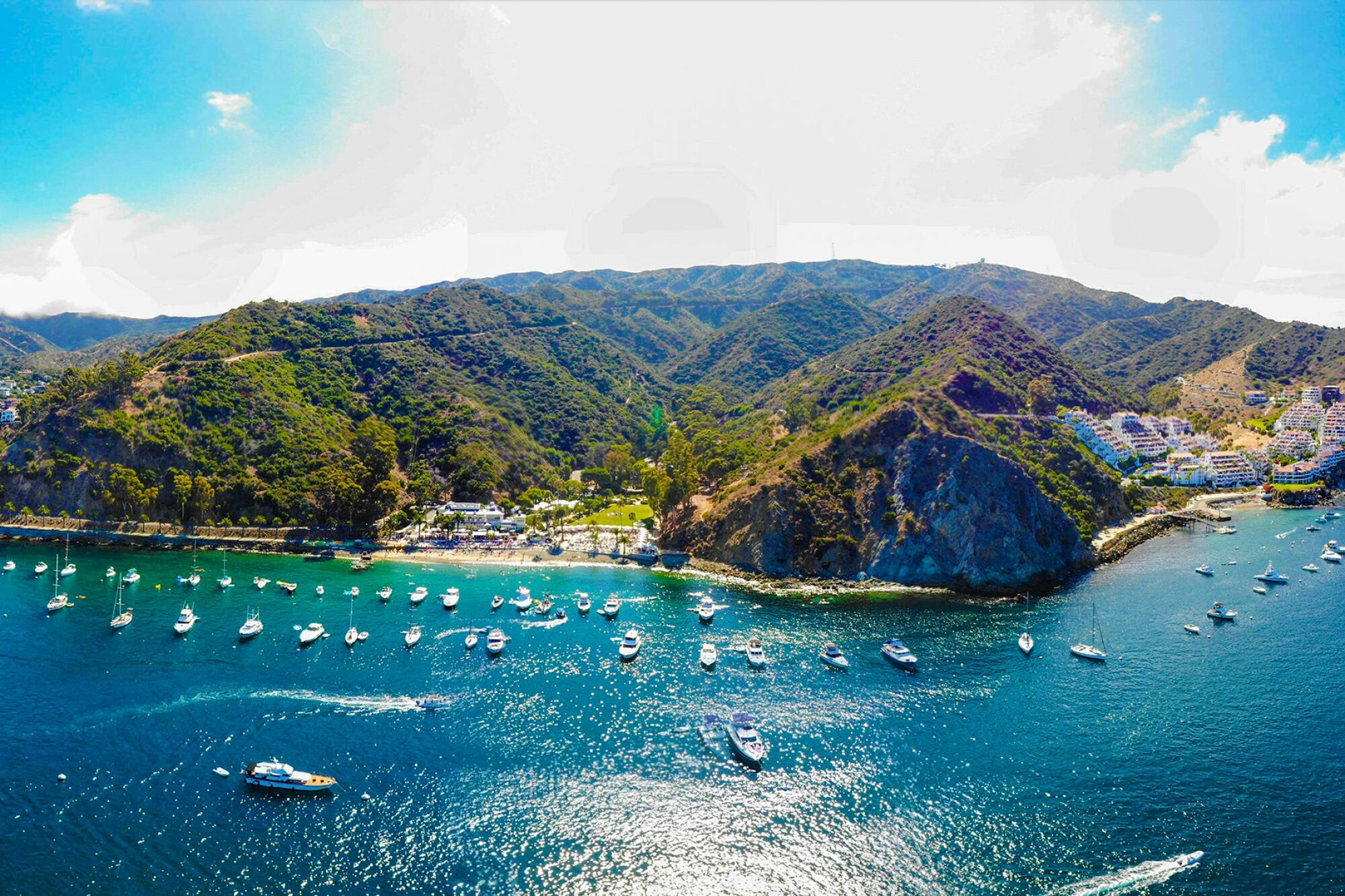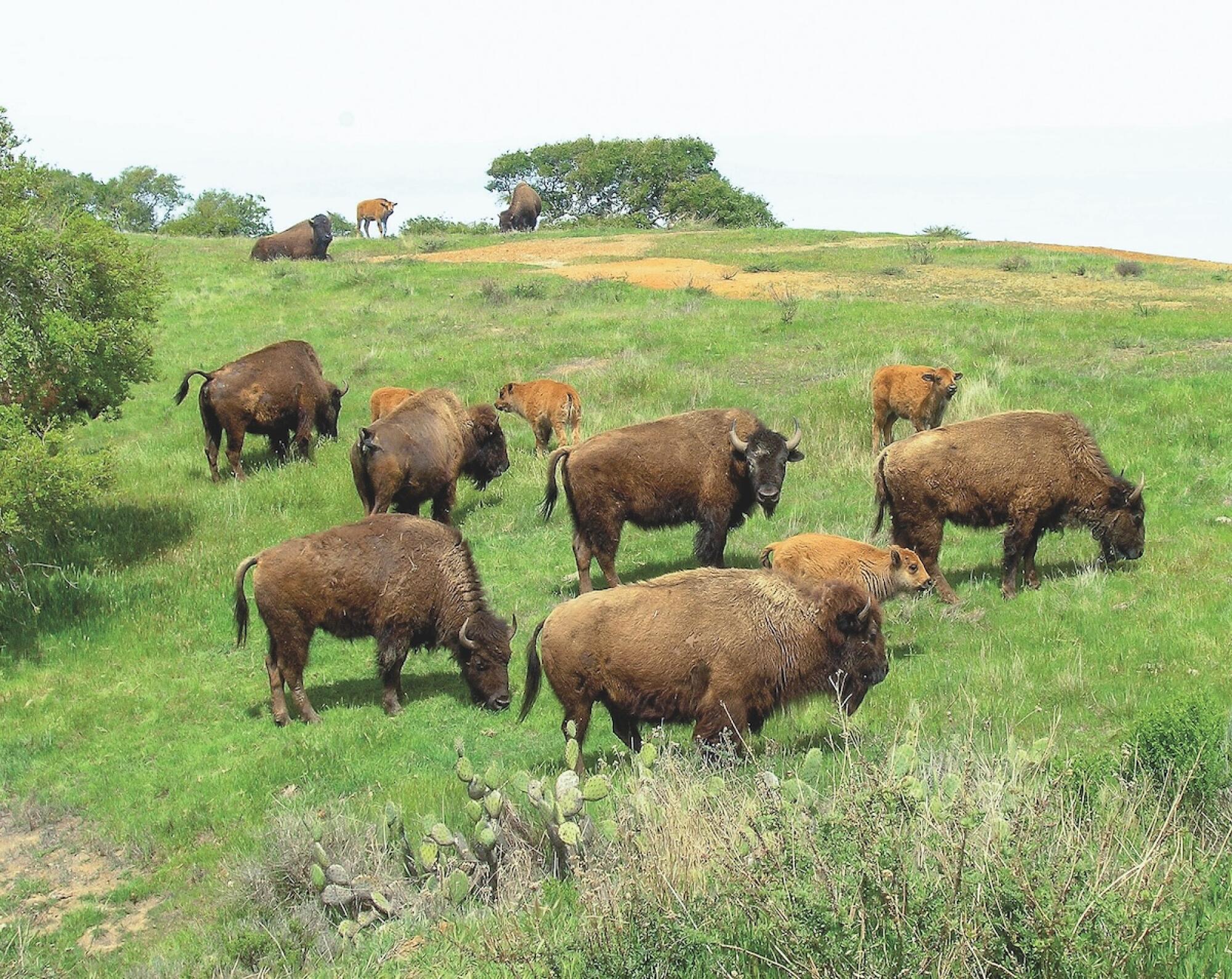
Southern California’s island of note gets 21st century upgrades to match its timeless charm.
- Share via
When’s the last time you took the ferry over to Catalina?
If it’s been a while, you might be surprised at how much the island has changed – and yet, how much it hasn’t. Catalina is still the scenic, charming, slightly adventurous slice of bygone Southern California it’s always been. But there’s just a lot more to do these days besides eating or drinking along the Avalon waterfront or lounging on your yacht.
The thrill of visiting Catalina remains the same. After an hour-long ferry ride to Avalon, visitors are magically transported to the Mediterranean, or at least as close as SoCal gets to the Greek Isles or the Amalfi Coast.
Beaches shaded by palm trees and colorful umbrellas. Quaint cottages crawling up the hillsides. An aroma of bougainvillea, hibiscus and other exotic flowers. Far more golf carts than motor vehicles. People sipping fine wines and sampling fresh-off-the-boat seafood in waterfront cafes . . . or hanging out with the locals in dive bars. And buffalo are still wandering the backcountry, descendants of a herd that escaped from a 1920’s silent movie set.

You can still revel in vintage Catalina or dive headlong into the newer ways to experience the Southland’s exotic island getaway.
Start with the chic Descanso Beach Club with its cabanas and specialty cocktails (like the vodka-infused Original Buffalo Milk) and DJ-driven beach parties on summer Saturdays. At the other end of the island, the laidback Harbor Sands beach club in Two Harbors offers thatched roof palapas with day beds, lounge chairs, fruit smoothies, bottled water, watermelon slices and food and beverage service from its companion restaurant.
Meanwhile, adventure has become the theme for exploring the 88% of the island that’s always been wilderness and is gradually devolving back into a wild state thanks to the Catalina Island Conservancy.
Zip Line Eco Tour is a five-stage thrill ride down Descanso Canyon that doubles as an intro to Catalina flora and fauna. At speeds approaching 35 miles per hour, the total drop is 600 feet – equivalent to the height of the twin Century Plaza Towers on the Westside.
At every station, zipline guides like Thomas Bauer spin tales of local flora and fauna. After spotting fox scat on one of the elevated wooden platforms, he related how the Catalina island canine nearly went extinct in the early 21st century because of a distemper outbreak. “Their population was down to less than 100. But they were saved by a captive breeding program and there are now around 2,000 foxes today.”

Hardcore hikers will want to take on the Trans-Catalina Trail, a 38.5-mile route between Avalon and Parson’s Landing near the island’s east end. It takes four days to trek with overnight stops at three campgrounds and the possibility of resupplying or meals at Airport in the Sky and Twin Harbors. The trail leads to secluded beaches on the island’s backside and possible encounters with quintessential Catalina animals like bison, bald eagles and that cute little island fox.
If you’re short on time, the two-hour Bison Expedition from Avalon is a fun and fact-packed journey in an open-sided, African safari-style vehicle over the top of the island to Airport in the Sky and back.
While wildlife spotting and panoramic views are the main attractions, with local experts like Native American driver/guide Milton “Bear” Opah leading the way, the expedition also delivers a fascinating history on the native Tongva people who inhabited Catalina prior to Spanish conquest and colonization.
Some of the older attractions have also upped their game. The iconic Avalon Casino (opened in 1929) offers a VIP Backstage Tour that includes the artifact-packed projection room, dressing rooms, the sumptuous Wrigley Lounge, and juicy nuggets about celebrities like Errol Flynn, Judy Garland, Bob Hope and Bing Crosby who frequented Avalon during the golden age of Hollywood.
“This was the world’s first purpose-built movie theater for talkies and is still the world’s largest circular ballroom,” said casino guide Mitchell Adams-Fisher. “The ballroom could hold as many as 6,000 dancers at the same time. They were able to get that many people upstairs because William Wrigley Jr. – who built the Casino – had the architects include pedestrian ramps just like Wrigley Field in Chicago.”
On Friday and Saturday nights, the cinema screens classic flicks ranging from cinema’s best to 80s pulp, with a pre-show that might include cartoons, old newsreels or silent films starring the genre’s superstars.
Whether you’re a baseball fan or an old Hollywood aficionado, the Catalina Museum of Art & History should make your “to do” list of island sights. Inside are permanent exhibits devoted to the Chicago Cubs and their spring training years on the island and the 1972 “invasion” by the Brown Berets, Chicano activists attempting to reclaim Catalina and the other Channel Islands for Mexico.
One of the most intriguing exhibits is on Marlyn Monroe, who lived in Avalon for almost a year while she was still Norma Jean. As a 16-year-old, she married neighbor James Dougherty, a merchant mariner who got posted to Catalina during World War II. “The island was basically a giant military camp during the war,” said museum deputy director Gail Fornasiere. “There’s a theory that, surrounded by so many young men who undoubtedly paid her lots of attention, that Avalon is where Marlyn first became aware of her allure and sex appeal.”
Every Thursday, the museum hands out free Art To Go creative kits to kids aged 6-12 while the first Friday of every month is “Culture With Cocktails” with its creative libations and live music.
Catalina continues to offer a wide range of marine activities, from scuba diving and snorkeling to guided sea kayaking trips, parasailing over Avalon Bay, glass-bottom boat tours, and submersibles that afford a fisheye’s-view of the kelp forests, sea lions, diving cormorants and bright orange garibaldi of Lover’s Cove.
And there’s more to come. Rusack Vineyards, which transforms Catalina-grown grapes into Chardonnay, Pinot Noir and heirloom Zinfandel at their winery on the mainland, is planning tasting experiences at the island’s historic Rancho Escondido.
Overnight visitors who want to explore Avalon after dark might want to book a room at the centrally located Hotel Atwater, which lies within easy walking distance of the waterfront restaurants, bars, galleries and shops, as well as the ticket office and departure point for many of the island adventures. Or go upscale (and uphill) to the Inn on Mt. Ada, a four-star boutique hotel that started life in the 1920s as a grand summer house for the Wrigley family that once owned the entire island.
Two Harbors’ digs include a campground with traditional sites and 10 tented cabins equipped with army cots, picnic tables and propane stoves, plus a couple of rental villas and the historic Banning House Lodge bed and breakfast inn.
Avalon’s surprisingly varied food scene runs a broad gamut from reasonably priced fish tacos and fish and chips at Eric’s on the Pier and burgers and hot dogs at Coney Island West to gourmet sandwiches at Café Metropole and California coastal cuisine of the upscale Avalon Grille. The latter, by the way, also serves a Chicago-style “Wrigley Martini” and Rusack Catalina wines.
Nowadays there are also more options for reaching Catalina from the mainland. Catalina Express ferries depart daily from Long Beach and San Pedro (one-hour crossing) and Dana Point (90-minute crossing). The Catalina Flyer makes a daily run between Newport Beach and Avalon (75 minutes). Regardless of the route, the relaxing boat ride is the perfect beginning (and end) to a Catalina adventure.












